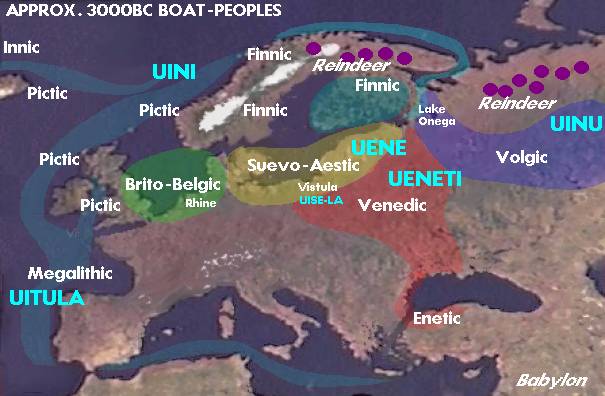sorry but occam's razor doesnot agree with you...
Przeworsk is clearly continuation of Pomeranian culture..
I2b was clearly never part of Pomeranian culture..
you are obviously biased when it comes to Germans
That is just wrong on so many levels. You take modern-day distributions of Y-chromosomal Haplogroups and ad-hoc assign ethnic affiliations to them. What you are forgetting is this:
- that these Haplogroup maps represent the modern-day situation and some 2200 years passed since the Pommeranian Culture.
- that Haplogroups and linguistic affiliations are rather detached from each other.
actually, I do take it in account....
spreads of haplogroups are never completelly cleaned out...
look at Croatia..so many depopulation events and still is there some E-V13...
but no Germanic I2b in Pomeranian culture area means just one thing - it never was there...
how come we can see Nordic bronze I1 in area and we can't see I2b?
cause I2b, the key marker of all German tribes, was not living there...
And, as I have stated before, if you take a look at Ptolemy, there is absolutely no onomastic evidence that there were any Slavic peoples in Germania in the 2nd century AD. Why should there be early Slavic peoples in the area in the 5th through 2nd centuries BC, then disappear in the 1st-2nd centuries AD and then suddenly reappear in the migrations period? That makes no sense. It's far more reasonable to assume that the Slavic people just arrived with the migrations period.
sorry, but haplogroupos reveal clearly lies of 19th century Germanic history school that set foundation for "drang nach Oosten"
besides from what I see Germanic people are misusing name Germans...
name clearly comes from ancestors of all I2 people.... not just I2b....
it probably never was I1 tribal name...
in Asia it is coupled to I2a (Gomer), in Africa to I2a1 (Garamantes)
in Europe it is primary related to I2b area and only recently in language sense it is used for I1 areas of Scandinavia..
from what I see original tribal name of I1 people is Suebi/Swedes
only that explains why North sea was mare Germanicum, and Baltic mare Suebicum
the two were not the same... but in some point of time they become the same...
Suebi crossed at some point from Scandinavia into lands of I2b (which very likely spoke same language as other I2 people) and merged into what is now called Germans...
they also pushed Pomeranian R1à culture (I do not know what its original language could have been - Scythian, Sarmatian, Balto-Slavic - who knows..) from Baltic shores to south...
that also explains why Slavic people do not use name Germans for Germans, but use name derived from word "mutes" (or people who lost their language that is ability to speak) and, often in pejorative sense, the name Švabe based on tribal names Suebi... Germans of today are just ex-Slavs and ex-Celts subjugated by early Swedes or Suebi...
besides Germans also don't use Germans as selfname... Deutch is quite different word...
but using name German is convenient for further stealing land from Slavic, Celtic, Baltic... as the area where people settled in houses was called Germania (based on I2 peoples tribal name) as opposed to area where R1a nomads lived (Sarmatia)....
coin Germanic languages is wrong word.. variant of IE language that is spoken by people who are now wrongly called Germanic people should instead be called Suebic or Swedish or Swaben languages
And again, you are insulting me. This time I'm going to report you. :useless:
don't you think I am insulted in many occasions with things you say to me? you continually try to put yourself in position of some teacher, while all you "know" is based on vague and biased hypothesis of 19th century "drang nach Oosten" history school...
point is already the name you use is insult to all Indo-Europeans... who do you think you are to use one of the names of primary God of all IE people? it's a blasphemy...
you hurt religious feeling by the very name you use......
but than again stealing other peoples names seems to be in the very basis of your culture...



